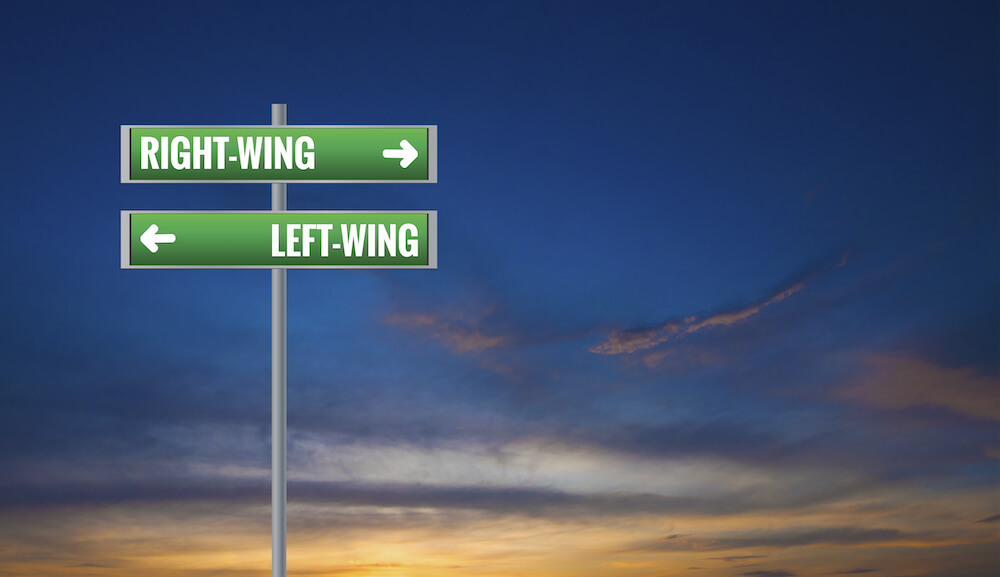Stalin, Gandhi, Trump, and Merkel: how to navigate the political spectrum
Politics is everything. Our attitude towards education, healthcare, and financial systems is politics, too. But is there any meaning to an age-old “right vs. left” divide?

Perhaps, you or some of your friends cringe at goings-on in national parliaments. Or, perhaps, you know people who claim to be beyond and above politics and ideology. Here’s an unexpected twist: like politicians, we all fall on the political spectrum because virtually anything, from sex and entertainment to education and criminal justice, is an issue for political debate and consideration. Let’s find out how and why.
In this set, you will get the toolkit to make sense out of all this arcane talk with left- and right-wing and even try to situate yourself within the political spectrum.

History of the left-right division
In the times of the French Revolution back in 1789, members of the parliament were up to writing a new constitution. They had to decide what power they were ready to confer on the king in a new political regime.
The deputies that represented rather conservative camps of society, like aristocracy, called for more power to the king and a right to veto new laws. They also urged for a moderate pace of changes and reforms.
The deputies with distinctively radical views, on the other hand, represented common folk and business circles. They wanted to take away many of the king’s privileges and introduce rapid reforms.
So, the conservatives sat to the right from the parliament president’s desk while the radicals sat to the left. The moderates who were eager to ponder on issues at length and changed sides frequently, sat in-between—or in the center.
The left-right division, though, didn’t take hold in other countries immediately. Despite French politics got into the left-wing and right-wing battles, other nations had their kinds of divisions and classifications already in place. At the time, they had Federalists and Republicans in the US, Whigs and Tories in Britain, royalists and republicans (or fans of the constitutional monarchy) in other European countries.
Why then the whole world talks about politics in terms that initially were relevant only to the French?
Throughout the 19th century, many European nations endured revolutions that overthrew old regimes of kings and aristocracy. First, in Germany, later in Italy, Russia, Poland, Spain, Austria, Hungary, and so on. One might say that they saw the French Revolution of 1789 as a sort of general framework for interpreting political allegiance and values in their home countries.

It became common for monarchists and conservatives in parliaments to occupy seats to the right while liberals and socialists preferred to sit to the left from the head (or the president, or the speaker).
But the division didn’t enter the politics of English-speaking countries until after the Great War.

In the 20th century, global politics became much more heated following the upheaval in social, scientific, and economic changes after the First World War.
The colonial empires started shaking, women and lower-income men got voting rights, new parties and ideologies held sway in public opinion while new mass media like radio and cinema sped up the process of political cohesion.
The radicalized political stances we now associate with the right and left were becoming more noticeable while the centrist policies and the traditional establishment were losing their former power.
What were the issues the left and right stood for?
Generally speaking, the main topics of the Left vs. Right talk are individual liberties, individual rights, and the distribution of political authority.
Let’s compare and contrast the essential assumptions behind left and right political theories as they had been discussed from the end of the 18th century till the middle of the 20th century.
The Left insist that
- the ultimate goal of society is to achieve social justice and equality
- to achieve equality, people have to enforce progressive and revolutionary policies through political institutions (like the law, police, criminal justice, taxation, and so on)
- society can ignore or pay less attention to the interests and rights of the individuals or groups who benefit from social injustices (like large businesses, aristocracy, the church).
Leftists believe that people by nature are born equal and free, so it’s our main task to make our society equal and free as well.
The Right believe that
- individual liberties and rights are of the foremost concern for any political body
- a free society is possible if the government is cut short of their authority and sees to only the tasks individuals can’t accomplish on their own—for instance, defending the country and enforcing the law.
- the ideal equality is a utopian tale as history and social science tell us that some hierarchy is unavoidable and even beneficial to the human race.
The then-hot topics differ from those political activists tend to discuss today, though.

Back then, women, the working people with low income (proletariat), and people of color didn’t have voting rights and couldn’t make their voices heard in politics. The church influenced education and law-making in many countries, so people couldn’t talk about many issues like divorce or birth-control legislation unless they were ready to be bullied by the church lobby. A lot of people used to die in the streets every week from poor sanitation and working conditions.
But these problems are not so pertinent today. In the countries we discuss here (we could refer to them as western democracies), voting rights are more available than in the 19th century. We could also say that more people gained much more freedom and equality, compared to 150 years ago. So why the debate continues?

